The Indian Air Force is set to shelve its plan for an engine upgrade of the Jaguar jet due to the high cost involved, reports local media.
Instead, it could go in for additional Sukhoi Su-30 MKIs to replace the aircraft that will be grounded.
The initial plan was to have the Jaguar upgrade completed by December 2017, with the modernised fleet remaining in service with the IAF beyond 2030. But state-owned Hindustan Aeronautics Ltd (HAL) has so far only delivered six upgraded prototypes after obtaining Initial Operational Clearance in November 2016.
With HAL struggling to integrate new radar on the jets, there has yet to be handover of a Final Operational Clearance unit.
The IAF, who is already short of 12 squadrons from its authorised fleet of 42, is now facing an even bigger aircraft shortfall as it abandons plan to upgrade 80 Jaguar fighters with new Honeywell engines@ajaishukla reports@IAF_MCC https://t.co/BhPkvsHd9l
— Business Standard (@bsindia) August 20, 2019
Currently, the IAF operates a total of six squadrons of the Jaguar. However, in actual strength, there are only five squadrons, as the sixth is not a complete squadron.



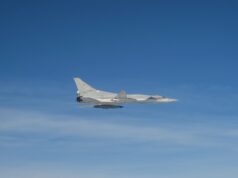
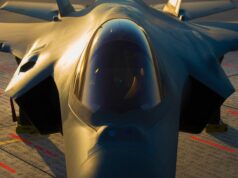

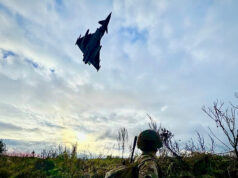
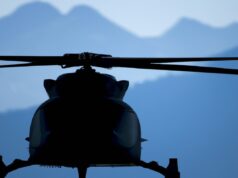
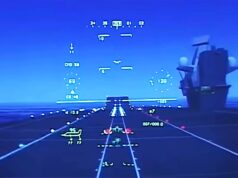
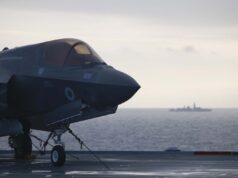

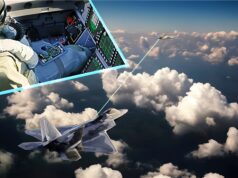

I really cannot see how it is economically viable for Inia to operate so many different aircraft types!
Also frustrating that we apparently cant afford to operate more than two fast jet types!
Well we did not long ago. So we can if the dam government funded our Millitary better.
We don’t need more than two fast jets types when the two types we have/getting are the finest in the world. And we certainly don’t need sqns of old or 2nd rate combat aircraft just to make the numbers look good.
We do have 2 of the finest aircraft types in the world yes, but we should have 3 types right now: Typhoon, F35 and Tornado – the Tornados until our F35s are in place, rather than having retired all of them when we barely had a squadron of F35 to replace. Should have been retired squadron by squadron as F35s are acquired and stood up.
I’d also argue that Typhoon and F35s are very expensive for simple CAS missions and we’ll wear them out early using them for this. Fine if we are prepared to spend the money to replace units but I doubt we will. I’d prefer having a 3rd, cheaper option for CAS and leave the strike and fighter roles to F35 and Typhoon.
In regard to the Tornado retirement, I was informed by a family member on 617 that it was more to do with lack of numbers of aircrew and the expense of training the guy/gal in the rear, tied in with expense and the need to save money pretty quick. Totally agree with you CAS airframe comment, used to have air on standby in Afghan, could be anything from a B52 to F16/GR9. They usually lasted an hour or so, re-tasked and then see them no more! A small turbo prop, agile, decent bomb load, couple of Paveways, with a decent loiter time, priceless! However would be pretty crap on a show of force low fly by lol (however always chinned them off if I could, prefer a 500lb, best show of force around) Cheers
We do have a dedicated CAS aircraft, the Reaper. It can fire off a Hellfire or drop a 500 pounder. It has duration in spades, as it can loiter over your area for at least 6 hours. There a couple of issues however. One is that it can only really operate in a benign environment. Two, it doesn’t have a gun. In today’s techno war era a gun fitted to a strike aircraft doesn’t seem the part. However, I can attest to its usefulness. The gun on the A10 goes without saying. But I hate to admit it, but calling in an airstrike from a couple of French Mirage 2000s did two things. One its a massive morale boost for our troops witnessing the strike on command from a radio call-sign who have been pinned down for a while. Secondly for the opposing forces it either serves as a warning to foxtrot oscar or it does its purpose! With a missile or bomb drop, there’s only one outcome. Sometimes a warning is all that’s needed.
The Reaper is an ideal aircraft for somewhere like Afghan or Iraq where there’s very little surface or air threat. However, operating near Syria or perhaps in a near peer conflict it will be shot down in minutes. Hence why Typhoon and Tornado were operating in the area.
Can’t compare the 2 countries. Yes india’s gdp is lower than the UK, but its buying power is many many many times higher.
I would imagine trained crews are far cheaper to pay in India than say the west. But even with that it’s crazy how any different types they have and how many different engineers/technicians, spare parts and no doubt weapons they’ll need to have.
It’s not hence planes & pilots are poorly trained, just recently Pakistan shot down 2 planes, on top of the helicopter that they destroyed themselves!
The only reason India has so many types is because most of them are so elderly and obsolete. What do the Indian aircraft do? It’s not like the number of fleets give them a broad set of capabilities. They would be much better off with just 2 or 3 combat types preferably with compatible ordnance and in larger numbers
I think 3 airframe types is perfect.
1) Fighter
2) Strike
3) Close air support.
Ideally aircraft that specialise in 1 but are capable of the others. A fighter that can do strike missions, and strike or CAS planes that can still defend themselves if needed.
If it were up to me I’d have had for that
1) Typhoon
2) F35
3) Harrier or A10
No 3 Hawk 200 or version of. UK built and commonality with trainer fleet.
Jags were always under powered but cheep to run, if we’d held onto them they’re were not bad candidates for CAS, although think they had issues in hot and high conditions. I believe this is what India’s planned upgrade was to improve.
Hawk would work; I didn’t even think of that but you’re right!
Or Hawk 128, which is what they use for training and also Red Arrows.
I’d say Hawk 128 since it’s our trainer jet anyway, then upgrade it to allow integration with Brimstone. A Hawk armed with a gun and Brimstone missiles would be a potent CAS platform and could also be armed with ASRAAM to defend itself if need be.
No it would be a liability, Hawk is best used as a trainer and not pressed into a role it is I’ll suited for in the modern battle space.
Why would it be a liability, any more than Harrier GR9 or A10 was/are?
If we hadn’t have scrapped and sold the Harriers I’d have said let’s just use those as theyd also have the added bonus of being carrier capable, but since we have I think Hawk could be a good way to go; it’s cheap, can fly low if it needs to for CAS but is also nimble and if you put a couple of Sidewinders or ASRAAMs on its wing tips it can defend itself from any enemy aircraft or shoot down enemy helicopters as a target of opportunity.
Main downside I see is limited space for weapons as it only has 5 pylons/hard points. But we can fit 3 Brimstones in a single underwing pylon so a Hawk could have a loadout of 6 Brimstone/2 500lb bombs plus a gun, and 2 Sidewinders/ASRAAM for self defence.
I’d say the Hawk has benefits over the Harrier. The Pegasus engines got nozzles we’re really hot meaning the harrier was a prime target for heat seeking missiles.
The A10 is the mother of all CAS airframes it’s built with redundancy and to take hits. But they don’t make it anymore.
The US is considering the TX, Textron have positioned the scorpion and Leonardo are arming their trainer. So I don’t see the Hawk as any different from these airframes. BAe are marketing the Advanced hawk as a light fighter. I believe the new wing on the advanced hawk allows for a larger load out as does the more powerful Adour being offered.
The GR9 and A10 have a defensive aids suite plus AAR capable. They are designed to go down town over defended airspace with an appropriate weapons and sensor load.
A hawk would only be able to carry a minimum weapons load for a short range and has no means to know if it is being shot at by a missile or fend off that attack with chaff or other means.
Even in the so called benign environment of Afghanistan we didn’t send any manned platform over that Airspace without defensive aids.
When you put all the weapons, defensive aids, sensors and refuelling probe on Hawk it is no-longer a nimble type. Unless you are operating somewhere with an Airfield close to the FEBA it just isn’t worth the time and resources, even then we have types that are better suited for that kind of scenario including Apache and various drones.
What the proposal would do is take money away from other offensive types to provide a very limited capability….hence it would be a liability QED!
Jaguar’s retirement after the GR.3 upgrade was a tragedy, particularly as it would have been perfect for Afghanistan for CAS. We could have let the remaining Jag fleet use up its airframe hours doing that and saved Harrier and Tornado airframe hours that were far more expensive.
But the Hawk 200 was a cracking aircraft. 20-40 of them in UK service would have saved us a fortune. They could have also received the Blue Vixen radars from the Sea Harrier when they retired…add in Amraam capability that Blue Vixen brought and you have a very useful 2nd line/air policing fighter that can’t be dismissed.
Mind you I always wondered if we could have squeezed an RB.199 in to replace the Adour in the Hawk 200…bit of a fuselage plug in front of the wing and one behind and it may have been doable. The RB.199 didn’t weigh that much more and developed more thrust dry than a Jag’s Adour. Adds some extra fuel in as well, behind the cockpit. Add in an RWR and basic self-protection suite and you have a very, very handy light fighter…
Even with the uprated engines later in its life Jaguar would have required the curvature of the Earth to get off the Runway in Afghanistan with a useful weapons payload.
Hawk 200 hardly set the market alight, 62 airframes to three customers. It is only really useful as a point defence fighter circling its own airfield or dropping bombs on insurgents in your own country. If you want to power project globally it is a very poor choice. Good luck trying to fit Blue Vixen, it is a larger and heavier radar than the APG-66H fitted to the 200 series. To integrate it would have been highly expensive and robbed money from other aircraft and programmes.
The UK doesn’t want a subsonic light fighter and the market these days is not very strong for it. The comparable AERO Vodochody L-159a ALCA was a complete sales disaster.
If we had “held on the the Jags” they would now be totally worn out, they were well used when we did get rid.
Credit to India for keeping these planes operational for so long, but how effective are they? They are only useful as light weight bomb trucks in uncontested airspace.
Well, the last B52 was built in 1962 so these are youngsters. But I agree, they are obsolete except in unopposed situations. Incidentally there are dozens at Cosford which are used for engineering training.
There’s still a squadron of hunters flying in the UK.
Not as a squadron, though, surely ? Simply the most beautiful jet fighter ever !
Yeah, it’s called hawker hunter aviation.
Who? Not in the UK military there isn’t. Do you mean a few preserved examples?
Here’s BAE’s list of UK Hunters:-
https://www.baesystems.com/en/heritage/hawker-hunter
Clearly the RAF ones are gate guardians.
How interesting. Hawker Hunter Aviation…I did not know of them. Indeed, virtually a Squadron. At Scampton too.
Yeah hawker Hunter aviation, that’s who I was on about. They have buccaneers too or actually just one buccaneer for long range missions.
I suppose what could be done though is to integrate the likes of Jaguar with stand off missiles to be launched from a distance and can be equipped with a pair of air to air missiles for self defence.
Cheaper to keep the old aircraft going and give them shiny new missiles than to build/buy a whole new class of aircraft.
This is also the route Russia appears to be taking; investing in it’s long range missiles. Not a bad way to go if you have limited funds.
Yes, that’s what they’re used for, bombing targets, secured and guarded by Su-30s. They’re used as a bomber.
30 squadrons! That surely can’t be all fast jets is it?
Hahahaha
No wonder they got there butts handed to them by a country a third of their size in Pakistan…
The face palm nature of Indian defence procurement strikes again!
They have deep experience of the Adour as they have operated and licence built the engine for decades. They were being offered an upgrade that was known to work based upon one for the RAF Jaguar fleet that would recycle large portions of their already in inventory Adour combined with components from the Adour fitted to their new Hawk fleet. It was a win win scenario that was cost effective and levered the institutional knowledge they already had about the Adour.
So what do they decide to do? Throw that all out and procure an engine they have no experience with, never been fitted to the Jaguar and required them buying totally new engines and setting up a completely new support infrastructure.
No doubt when some digging is done you will find the usual story of fixers and kick backs…
I think the Adour offered was heavier than the HW power plant. HW low balled the bid and RR dropped out, then came the bribery case against RR as I recall which I think his holding back RR in India still. With only a single bidder HW could name their price but seems to have now backfired.
I was aware that the RR offering was heavier but considering that it was based upon a known to work upgrade that would have met the needs of the IAF I always felt it was a week excuse. As for RR blackballing I would put money on it being down to the local fixers that RR were forced to employ.
I would say your right RR was probably pressured to make some payouts, the RR bribery case as I understand was over the hawk trainer engines which I always thought was odd, after all what other engine would you fit to the hawk.
No…next question 😉
Probably need arestor wire for landing though, but that would be inexpensive to setup surely. And our jets don’t even use close to the whole runway for taking off so I wonder if Taranis did it could take off, but no doubt it’s not ski jump tested.
Taranis is powered by an Adour. Dirt cheap to run….but not exactly known for its power output…even in reheat.